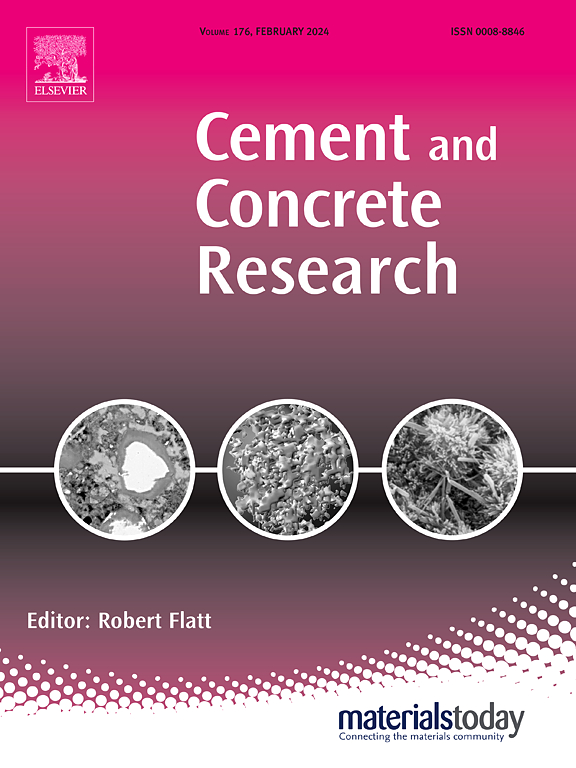高铁氧体硅酸盐水泥:Q相和石膏对水化动力学的协同影响
IF 13.1
1区 工程技术
Q1 CONSTRUCTION & BUILDING TECHNOLOGY
引用次数: 0
摘要
高铁氧体硅酸盐水泥(HFPC)是普通硅酸盐水泥的低碳替代品,其C3S和C3A降低,C4AF和C2S升高,但由于水化动力学缓慢,早期和中期强度发展不足。为了解决这一限制,系统研究了Q相(Ca20Al26Mg3Si3O68)熟料(0-12 wt%)和石膏(0-8 wt%)对HFPC水化调节、力学性能和微观结构演变的协同作用。结果表明,含有6 wt% Q相熟料和4 wt%石膏的混合配方可获得与纯HFPC相当的1天抗压强度,同时显著提高28天强度,超过90 MPa。石膏的加入可以减轻Q相引起的早期水化迟缓,主要是通过促进钙矾石的成核和稳定来实现的。与HFPC相比,这种协同作用延长了C-(A-)S-H链,增强了氯离子的结合,同时孔隙率降低,孔径分布均匀化,共同提高了机械性能和耐用性。本文章由计算机程序翻译,如有差异,请以英文原文为准。
High ferrite Portland cement: Synergistic influence of Q phase and gypsum on hydration kinetics
High ferrite Portland cement (HFPC), a low-carbon alternative to ordinary Portland cement with reduced C3S and C3A alongside elevated C4AF and C2S, exhibits insufficient early- and mid-term strength development due to sluggish hydration kinetics. To address this limitation, the synergistic effects of Q phase (Ca20Al26Mg3Si3O68) clinker (0–12 wt%) and gypsum (0–8 wt%) on the hydration regulation, mechanical properties and microstructure evolution of HFPC were systematically investigated. Results demonstrate that a hybrid formulation containing 6 wt% Q phase clinker and 4 wt% gypsum achieves a 1-day compressive strength comparable to pure HFPC while significantly enhancing the 28-day strength to over 90 MPa. Gypsum addition was found to mitigate the early-stage hydration retardation induced by Q phase, primarily by promoting the nucleation and stabilization of ettringite. This synergy elongates C-(A-)S-H chains and enhances chloride binding than HFPC, with concurrent porosity reduction and pore size distribution homogenization collectively boosting mechanical and durability performance.
求助全文
通过发布文献求助,成功后即可免费获取论文全文。
去求助
来源期刊

Cement and Concrete Research
工程技术-材料科学:综合
CiteScore
20.90
自引率
12.30%
发文量
318
审稿时长
53 days
期刊介绍:
Cement and Concrete Research is dedicated to publishing top-notch research on the materials science and engineering of cement, cement composites, mortars, concrete, and related materials incorporating cement or other mineral binders. The journal prioritizes reporting significant findings in research on the properties and performance of cementitious materials. It also covers novel experimental techniques, the latest analytical and modeling methods, examination and diagnosis of actual cement and concrete structures, and the exploration of potential improvements in materials.
 求助内容:
求助内容: 应助结果提醒方式:
应助结果提醒方式:


